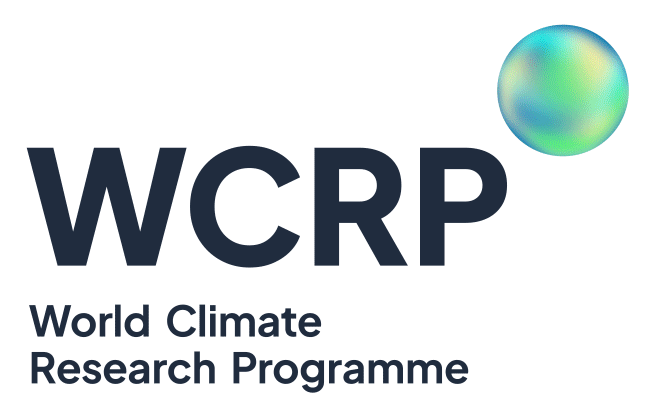CORE
Co-ordinated Ocean-Ice Reference Experiments
 |
Within the ocean modeling community, there are examples of a number of successful named intercomparison activities such as OCMIP, DYNAMO, DAMEE, and DOME that are organized around particular research questions with protocols designed specifically to address those questions. There has not, as yet, been a more general open-ended "OMIP" of the AMIP/CMIP type. This may be attributed in large part to the lack of an established "standard practice" or "reference" experiment commonly conducted by a broad cross section of the modeling groups. This, in turn, results from the difficulty of the problem of specifying comprehensive surface forcing for global ocean and ocean-ice models of sufficient generality to meet the needs of a wide variety of investigations.
WGOMD have decided to establish experimental protocols for a series of "Co-ordinated Ocean-Ice Reference Experiments (CORE)" that can become the basis for PI driven collaborations between groups and potentially serve as a basis of a broader ocean model intercomparison activity of the AMIP/CMIP class at some future date. CORE does not constitute an Ocean Model Intercomparison Project (OMIP) as WGOMD is not prepared to formally sanction the current CORE protocol of forcing dataset until the community has had time to provide feedback. This means that CORE is a research project that is voluntarily conducted by interested scientists and there is no formal oversight committee or data repository arrangement in place. This does not prevent the project from eventually evolving into an OMIP.
Ocean-ice model experiments are useful since they are less costly than fully coupled experiments, they can be used in hindcast mode to reproduce the history of ocean and ice variables and hence help in the interpretation of observations, they allow for the understanding of processes in the absence of biases introduced by the atmospheric model and hence potentially give superior representations (compared to the ocean component of a coupled model) of key physical, chemical and biological processes and so help in model development.
Overview
The key assumptions that have led to the concept of CORE are that global ocean-ice modelling is a useful exercise:
- Provides mechanistic understandings of the ocean climate system.
- Provides a key step towards coupled climate models.
Comparing simulations of different global ocean-ice models is a useful exercise:
- Renders more robust understanding.
- Improves the models, especially by identifying outliers.
- Refines the experimental design, including forcing.
The development of a protocol for running ocean-ice models is of interest to the modelling community to help facilitate simulation comparisons.
The key goals of CORE are to provide a workable and agreeable experimental design for global ocean-ice models to be run for long-term climate studies and to establish a framework where the experimental design is flexible and subject to refinement as the community gains experience and provides feedback.
- A Brief History of WGOMD CORE
- WGOMD Coordinated Ocean-ice Reference Experiments (COREs)
- Powerpoint presentations by S. Griffies from the 7th Session of WGOMD held in Bergen, August 2007.
An email list exists for CORE users to notify them of updates, corrections, etc.
CORE Release Notes
The document describes the datasets and protocol for running global ocean-ice climate models according to the CLIVAR Working Group on Ocean Model Development (WGOMD) Coordinated Ocean-ice Reference Experiments (COREs).
Experiments specified in the CORE framework include:
Click on the above boxes to access experiment-specific results and details.
Limitations
The following are some problems of running ocean-ice experiments
Diversity of methods:
- Each group has favorite methods to get the models running.
- Each group may choose to "tune" forcing to help their simulation, but some of these tunes are irrelevant or harmful to other models.
- Each group defends their methods as reasonable and within error bars.
- Many groups fail to document the details of their methods.
Inconsistencies when decoupled:
- Decoupling ocean-ice from interactive atmosphere-land exposes the simulations to spurious instabilities, largely related to ambiguities in how to specify the hydrological cycle (e.g., mixed boundary conditions and THC stability).
- This problem leads to endless debates about SSS restoring.
- These inconsistencies often do not cause problems until 100s of years.
Ambiguities in forcing:
- Ocean surface fluxes are poorly known.
- Developing a global dataset for running ocean-ice models is very tough.
- This is in contrast to the well known SST, making AMIP seem trivial compared to OMIP.
The question of whether CORE should remain as ocean-ice experiments or move to coupled experiments receives considerable attention. On the one hand, running CORE-type experiments would facilitate testing ocean parameterisations in a framework that is isolated from the sensitivities generated by running in coupled model. On the other hand, there is the view that testing multiple ocean models would be less beneficial than assessing the dominant atmospheric model limitations by testing the response to atmospheric models of increasing complexity.
Surface forcing for CORE
The CORE surface forcing has been developed by Bill Large and Steve Yeager at NCAR for global ocean-ice modelling. CORE.v1 includes both an interannually varying forcing (IAF) and a normal year forcing (NYF) derived from the interannual forcing. CORE.v1 is detailed in the technical report Large and Yeager (2004). Both CORE.v1 and CORE.v2 are supported at NCAR and GFDL for use in studying global ocean-ice dynamics.
CORE.v2 was released in May 2008 and it is documented in Large and Yeager (2009). The interannually varying forcing and now extends from 1948-2009.
All the CORE datasets, support code, and documentation can be accessed from GFDL MOM4 Data Sets website.
References
Gerdes, R., S. Griffies, and W. Hurlin, 2005: Reaction of the oceanic circulation to increased melt water flux from Greenland - a test case for ocean general circulation models, CLIVAR Exchanges, No. 33, 28-31.
Powerpoint Presentations
S. Griffies, Bergen 2007: A Brief History of WGOMD CORE
S. Griffies, Bergen 2007: WGOMD Coordinated Ocean-ice Reference Experiments (COREs)












